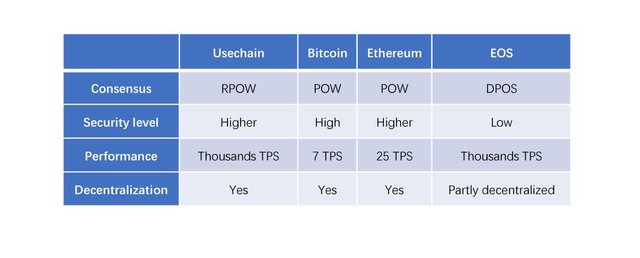
Introduction
The whirlwind of the blockchain has launched us into an avalanche of ever changing methods of carrying out activities and transactions online. The emergence of blockchain technology has opened ways for easier, faster and secure transactions while cutting out middlemen and re-distributing funds among users.
Regardless of the impact this new innovative technology has made, adoption is yet to go mainstream due to several bottlenecks that exist on current blockchains.
One of the core values of cryptocurrency is anonymity. This has many advantages but has also paved a way for criminal activities such as drug trafficking, money laundering and illegal fundraisings to occur.
Usechain solves this by connecting on-chain addresses with off-chain identities.
The three most important features of blockchain technology are
- Scalability
- Security
- Decentralization
However, most existing blockchain networks have not been able to achieve all three of these features simultaneously without having to sacrifice one feature or lower the standard for it.
Usechain finds a perfect balance for these features and will use this to add value to the blockchain economy.
What Is Usechain?
Usechain is the first mirror identity blockchain ecosystem built on the Mirror Identity Protocol (also called Identity Virtual machine) and integrated with different cutting edge technology.
Usechain uses a new consensus algorithm – Randomized Proof of Work (RPOW) to provide secure operations on the Usechain network at a high performance speed.
Usechain associates on-chain addresses of cryptocurrency account with real identity off-chain while retaining anonymity. This will definitely increase adoption as verified identities can even borrow loans online and cryptocurrencies will have real-life use instead of just being traded on exchanges.
Usechain is designed to process large scale transactions at the same time as well as handle a wide range of commercial and social apps that will be built on the platform.
What Problems Does Usechain Solve?
Most existing digital assets can only be traded on exchanges. Usechain utility token will be able to be used in real life day to day activities and bring value to everyone.
The low performance of popular blockchains like Bitcoin and Ethereum need to be improved. Slow confirmation of transactions is inhibiting the growth of the blockchain and projects built on it.
KYC and AML processes have been required from the public during several registrations and Ico participation which defeats the whole point of cryptocurrencies as a way to make anonymous transactions.
Much needed decentralized apps are difficult to build on current blockchains hence centralized apps abound.
Usechain network will allow easy building of decentralized apps on its blockchain, DApps that actually fill a need. Usechain will also be able to handle to handle growing demands in transactions per second.
KYC and AML processes will no longer be necessary as Usechain connects on-chain addresses with off-chain identities. Usechain ecosystem will continue to be improved and upgraded to accommodate dynamic demands. Usechain uses a new consensus algorithm to achieve their vision.
Randomized Proof of Work

RPOW consensus algorithm provides highly scalable transactions with low energy consumption which encourages mining. The RPOW is also very secure as it combines decentralization and distributed ledger technology to resist malicious attacks. It also meets the demands of numerous applications that will be built on the network.
RPOW reduces the centralization degree of hashing power and can withstand attacks. Miners are assigned different difficulty to increase efficiency.
RPOW Versus POW, POS, DPOS, POA
Proof of Work (POW) was the first blockchain consensus algorithm. Here massive mining operations and huge power are required for mining. In POW, miners solve hard useless problems in ordrt to create blocks and the block with the longest chains wins. The major setback here is the slow transactions.
For Proof of Stake (POS), minters stake their tokens to vote on which fork to support, attacks on the system would cost attackers and money and it is more decentralized than POW.
Delegated Proof of Stake, allows holders of the coin to elect delegates to validate blocks which is not entirely decentralized.
Proof of Authority is a consensus algorithm that is run by admins and approved accounts.
These blockchains are still lacking in many areas, that is why Usechain chose RPOW which satisfies scalability, decentralization and security.
Conclusion
Usechain builds a secure, high performance decentralized platform that will be incorporated into daily living. Usechain has leading team in blockchain technology that will help achieve it’s vision